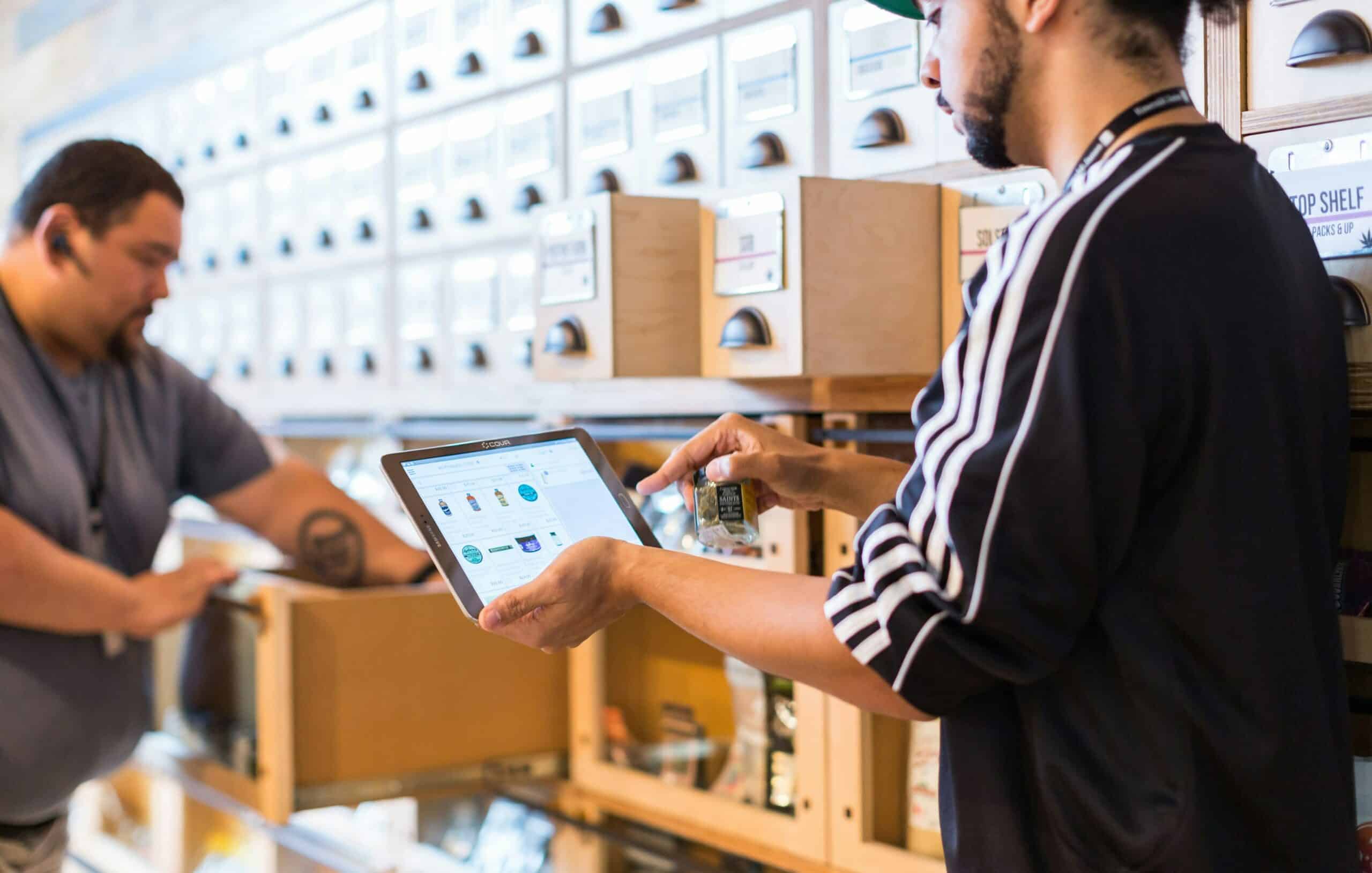Ecommerce, Productivity, Uncategorized, Warehousing • 8 Minute Read • Jul 1, 2024
Sustainable Inventory Management for Ecommerce Companies

The main focus of inventory management is to maximize efficiency and minimize cost. With great inventory management, business is easier and more profitable. It also makes the buying experience better for customers. Today, sustainable inventory practices are also taken into consideration to reach inventory goals.
Which is smart considering one study found 66% of survey respondents consider sustainability when making a purchase. These eco-friendly practices go well beyond what the product is, including how it’s made, what you do with it at the end of its life, and the business practices the company uses.
Sustainable inventory management can maximize efficiency and minimize cost in new ways that make your business more resilient and profitable.
If you’re new to sustainable inventory, here’s everything you need to know and how to get started.

Why are sustainable practices important for inventory management?
When executed well, sustainable inventory practices meet customer demands, minimizes waste, and reduces resource consumption. It’s good for business and our communities.
Reducing your environmental impact can lower costs via reduced energy consumption, lower waste disposal fees, and maximizing materials and supplies. Conserving resources that can be recirculated into production either helps you save on the products you already make, or you can offer new products. You’ll also potentially reduce your supply chain management risk by utilizing all of your materials or ordering from more sustainable or local vendors.
Sustainability can also be a major driver in improving brand reputation and attracting new customers. There are many ways sustainable practices can impact your bottom line and return on investment.

What is sustainable inventory management?
There are lots of ways to practice sustainable inventory management. Some of which include:
- Using resources efficiently
- Minimizing waste
- Choosing sustainable suppliers
- Choosing sustainable materials
- Investing in sustainable energy
- Adding carbon offsetting as an option to your shipping
- Partnering with local vendors to reduce your carbon footprint
This isn’t a complete or finalized list. Sustainable warehouse management should answer the question, “How can I reduce my businesses impact on the environment?” Think about your sourcing, storage, distribution or disposal.
Another way to think about sustainable inventory management is through the sustainability principles of: Reduce, reuse, recycle, recover, and refuse.
Reduce: Look for ways to improve your forecasting and accuracy. Also, reducing your lead times can help avoid costly quick-shipping that often has a much higher carbon footprint.
Reuse: Find innovative ways to reuse items rather than throwing them away. This could mean using scraps or extra pieces to create your usual products, or creating a new product.
Recycle: Perhaps the most well-known sustainability principle, recycling converts wasted materials into new items. This could be recycling you do at your own shop, recycling using a large facility in your community, or recycling by donating waste to other businesses or non-profit organizations who can reuse them.
For example, check out Art of Recycle, which accepts donations and recirculates them to teachers and afterschool programs. They accept items like yarn, clay, and electronic wires.
Recover: If you can, find ways to incorporate items that are landfill bound or need to be recycled. By using recovered materials, you can give something a second life and avoid using virgin materials.
Refuse: Take a hard look at your products and the materials you’re using. If there’s something that isn’t being ordered, or doesn’t need to be included in your product, consider omitting it. That said, don’t compromise the integrity of your products for the sake of refusing!
Managing your warehouse sustainably is ever changing, and could have specific practices for your business or industry.

Benefits of Sustainable Inventory Management
We consider sustainable inventory management a win, win, win situation.
It benefits you, the business owner, when it comes to your bottom line. Sustainable practices can help you save money through reduced storage cost, transportation emissions, and inventory waste. You’ll also potentially be able to charge more while increasing your reach and audience.
You’ll also have a competitive advantage of seeing inventory management through a new lens. Sustainable inventory management helps businesses stay ahead of the competition, experiment with new technologies, make the most of renewable resources, and create more self-reliance. You’ll have a better position and response to future environmental challenges.
Benefits for your business:
- Minimize unnecessary expenses
- Optimize resource utilization
- Enhance brand reputation
- Lower operational costs
- Gain a competitive and resilient edge
- Attract more/new customers
Your customers also benefit as sustainable products tend to last longer and have little to no negative impact on the buyer’s community or the overall environment. Some other benefits include:
- Consistently meet customer demands
- Improve customer satisfaction
The communities and people who make the materials or pieces for your product will also benefit from avoiding harmful materials and chemicals. There are also benefits to the environment, including:
- Better resource efficiency
- Reduces waste and greenhouse gas emissions
- Improves the lives of workers and their communities
Cotopaxi does an exceptional job of using sustainable warehouse practices and supporting the communities they operate in, including offering grants to employees to boost wellbeing.

How to Implement Sustainable Practices
The first step to implementing a sustainable practice is taking note of where your inventory management practices are currently. Look at the products you offer and the materials you use to make them. Measure your inventory for performance and accuracy. Also take into account your carbon footprint, energy consumption, and sourcing.
There are carbon calculators, life cycle analysis, and environmental audits available to help you get started.
Then prioritize durability, recyclability, and the use of environmentally friendly resources. Make sure you set SMART goals, which stands for specific, measureable, achievable, relevant and time bound. IKEA does a great job of outlining their goals if you need a starting point.
Once you’ve determined your goals, make a plan for how you’ll measure things like your emissions, energy consumption, waste generation and water usage. You may have to make changes and adjustments along the way to reach your goals.
Last, don’t forget to tell your customers about the sustainable practices you’re implementing. This can help your business stand out from other brands in your industry.
10 Eco-friendly Inventory Practices
- Reduce transportation emissions by partnering and sourcing local materials, or buying in bulk. Ideally, local suppliers will also have sustainable certifications like LEED, B Corp, FSC, GOTS, and more.
- Find an e-delivery service for some or all of your products, eliminating your organization’s transportation carbon footprint.
- Using easily recyclable and compostable packaging. Think cardboard, not plastic as most plastics are not recyclable in all recycling facilities and can only be downcycled.
- Implementing just-in-time inventory management systems, so you only create products when they’re ordered to avoid surplus and waste.
- Consider dropshipping, which allows you to sell a product without carrying the inventory. Instead, it’s shipped from the supplier to the customer when ordered, shortening the product’s overall journey and reducing carbon emissions.
- Start a trade-in program that recycles old products into new ones and gives customers a discount on their next purchase.
- Donate excess inventory to charity, or host a generous flash sale for loyal customers rather than trashing old products you plan to discontinue.
- Implement proper storage techniques, an inventory tracking system, and adopt lean warehouse principles. Look into lean management, kaizen or 5S.
- Optimize inventory levels and locations, also known as demand forecasting and planning. This can help you avoid understocking, overstocking and obsolescence. Historical data, market trends and customer insight can all help you forecast more accurately.
- Sell returned items at a discounted (open box) rate rather than sending them to landfills. Allbirds does a great job of reselling slightly imperfect or gently used products.
Feeling intimidated? Start small to make lasting changes.
Implementing changes can be hard and scary for any business owner. Yet, those who take chances are the most likely to reap the rewards. It’s always a good idea to start small, or test new products, materials, or operations before rolling them out to your entire business.
While sustainable inventory management and practices can require an upfront investment, and a little trial and error, it could make a crucial impact on your business today, and tomorrow.
Being a business owner can feel like living on a deserted island. Running a business doesn’t have to be a lonely endeavor. Subscribe to our newsletter for more insight and strategies on inventory management and running your business.




